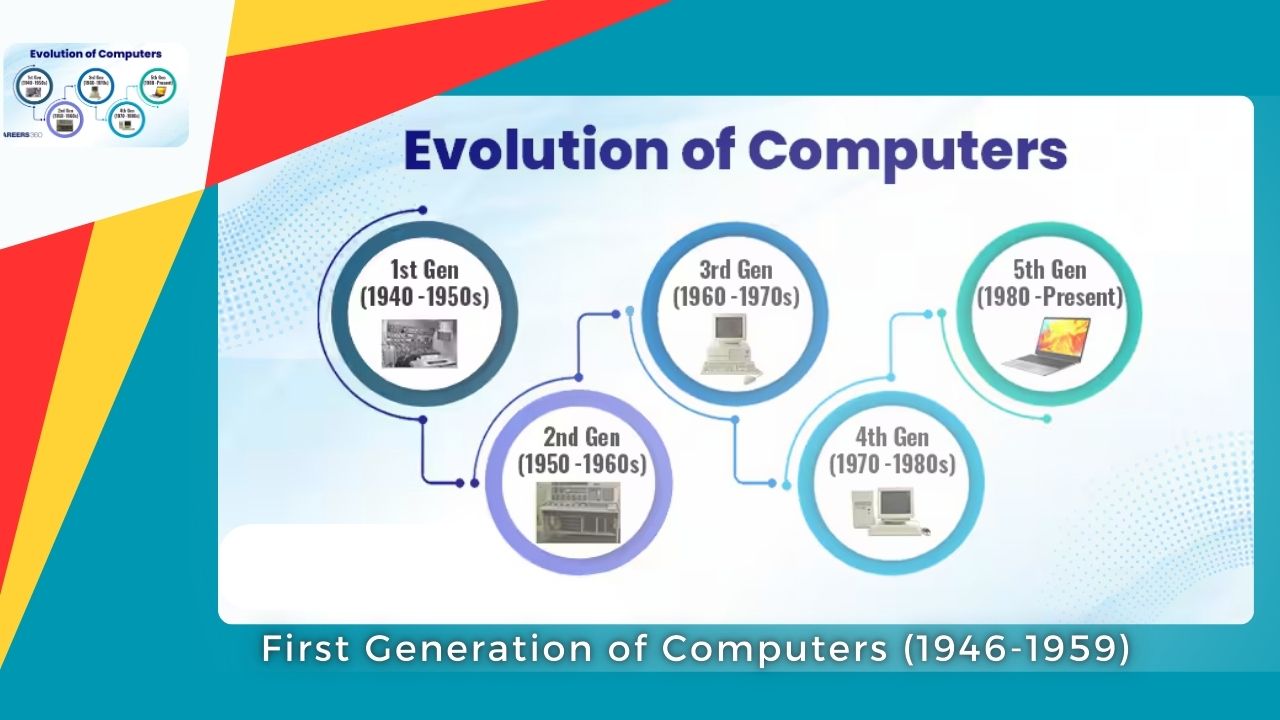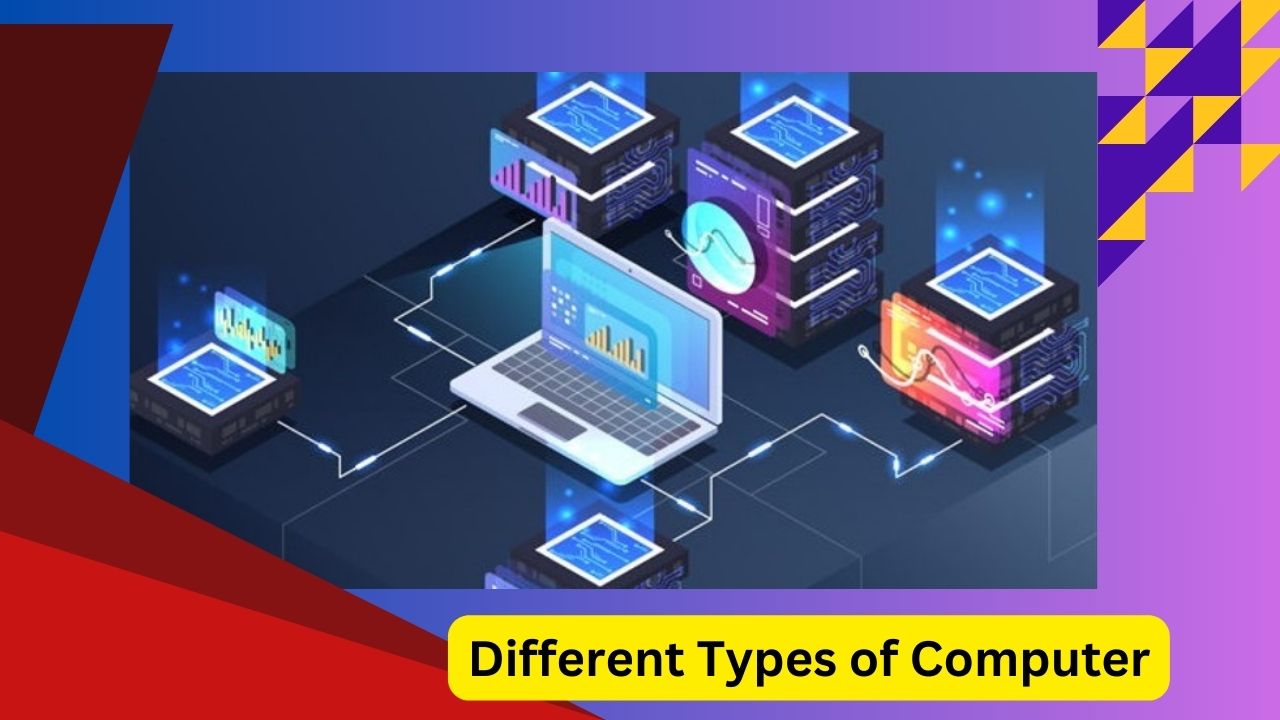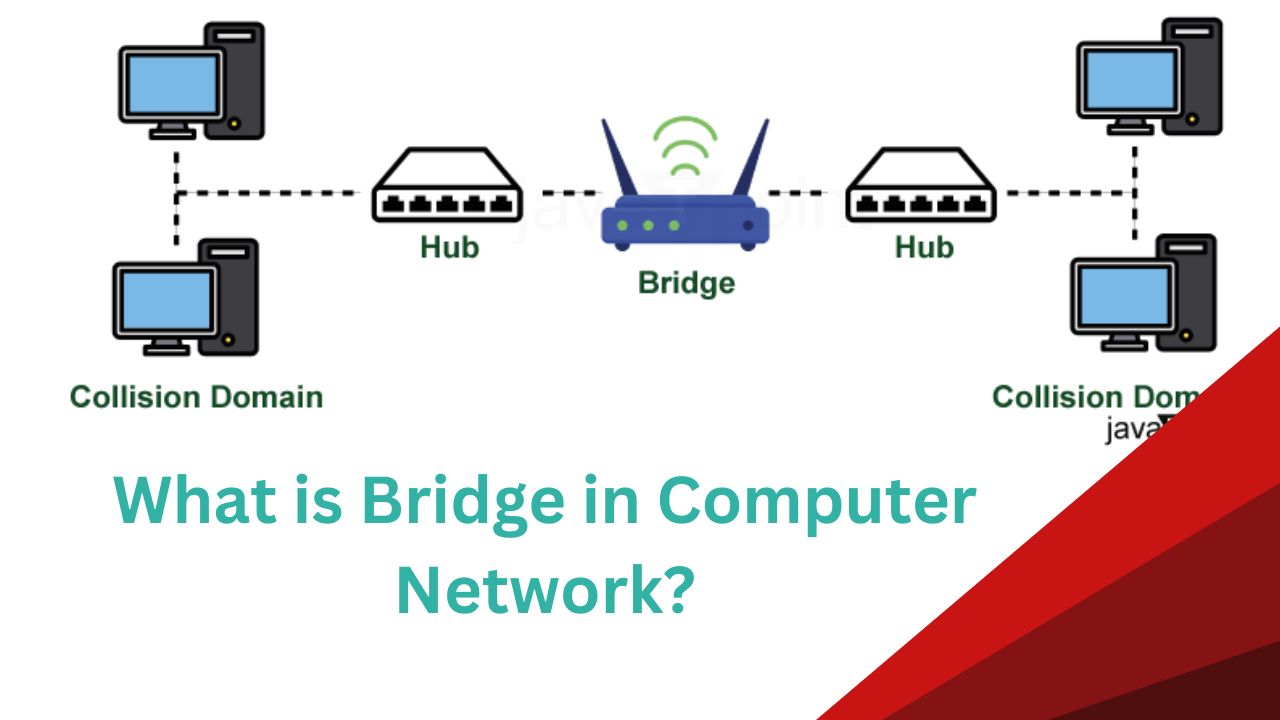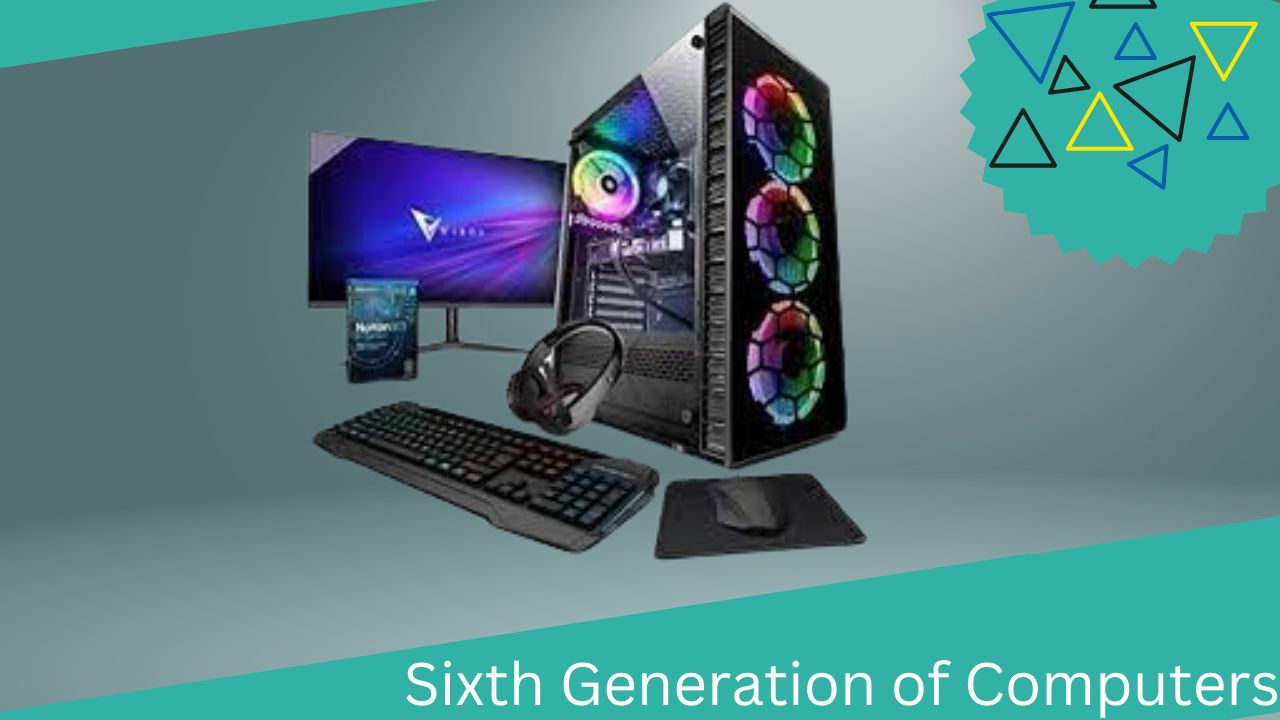Computers have gone through many changes over time. The first generation of computers started around 1940 and since then there have been five generation of computers until 2024. Computers evolved over a long period of time, starting from the 16th century,and continuously improved themselves in terms of speed, accuracy, size, and prize to become the modern day computer.
The different phases of this long period are known as computer generation. the first generation of computers was developed from 1946-1959, followed by the second generation from the 1950s-1960s, the third generation from 1964-1971, the fourth generation from 1971-2010, and the period from 2010 to till date and beyond is roughly considered as the period of the fifth generation of computers. In this article, we will discuss the computer generation in great detail.
First Generation of Computers (1946-1959)
The first generation used vacuum tube technology and were built between 1946 and 1959. Vacuum tubes were expensive and produced a lot of heat, which made these computers very expensive and only affordable to large organizations. Machine language was the programming language used for these computers, and they could not multitask.
The ENIAC was the first electronic general-purpose computer that used 18000 vacuum tubes and was built in 1943 for war-related calculations. Examples of the first generation include EDVAC, IBM-650, IBM-701, Manchester Mark 1, Mark2, etc.
Here are two of the main advantages of first generation:
- The first generation was tough to hack and was quite strong.
- The first generation could perform calculations quickly, in just one-thousand of a second.
Here are two of the main disadvantages of first generation:
- They consumed high amounts of energy/electricity.
- They were not portable due to their weight and size.
Second Generation of Computers (1950s-1960s)
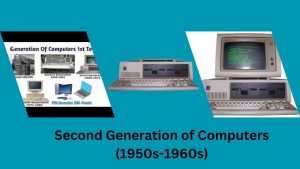
The second generation of computers was developed in the late 1950s and 1960s. these computers replaced vacuum tubes with transistors making them smaller, faster and more efficient. This was done as transistors were more reliable than vacuum tubes, required less maintenance and generated less heat.
Second-generation computers were smaller and more portable, making them accessible to a wider audience. Magnetic core memory was also introduced in this generation, which was faster and more reliable. This laid the foundation for further developments, paving the way for the third generation that used integrated circuits.
Here are two of the main advantages of second generation:
- They provide better speed and improved accuracy.
- Computers developed in this era were smaller, more reliable and capable of using less power.
Here are two of the main disadvantages of second generation:
- They were only used for specific objectives and required frequent maintenance.
- The second generation of computer used punch cards for input, which required frequent maintenance.
Third Generation of Computers (1964-1971)
The third generation of computers emerged between 1964 and 1971. This generation used microchips or integrated circuits, making it possible to create smaller, cheaper and much faster computers.
The third generation of computers was much faster than previous generation, with computational times reduced from microseconds to nanoseconds. New input devices like the mouse and keyboard were introduced, replacing older methods like punch cards. New functionalities, like multi-programming and time-sharing, and remote processing, were introduced, allowing for more efficient use of computer resources.
Here are two of the main advantages of third generation:
- The use of integrated circuits made them more reliable.
- Smaller in size and required less space than previous generation.
Here are two of the main disadvantages of third generation:
- Advanced technology was needed to manufacture IC chips.
- Formal training was necessary to operate third-gen computers.
Fourth Generation of Computers (1971-2010)
Fourth generation computers were developed in 1972 after third generation that used microprocessors. They use Very Large Scale Integrated (VLSI) circuits, which contained about 5000 transistors capable of performing complex activities and computations.
Fourth generation computers were more adaptable, had more primary storage capacity, were faster and more reliable than previous generations, and were also portable, small and required less electricity. Intel was the first company to develop a microprocessor used in fourth generation computer.
Fourth generation computers used LSI chip technology and were incredibly powerful but also very small, leading to a societal revolution in the computer industry. This generation had the first supercomputers, used complex programing languages like C, C++, DBASE, etc. and could perform many accurate calculations.
Here are two of the main advantages of fourth generation:
- Fourth generation computers were smaller and more dependable.
- GUI (Graphics User Interface) technology was used in this generation to provide users with better comfort.
Here are two of the main disadvantages of fourth generation:
- They use complex VLSI chips and VLSI chip manufacturing requires advanced technology.
- To build these computers, integrated circuits (ICs) were required, and to develop those, cutting-edge technology was needed.
Fifth Generation of Computers (2010-Present & Beyond)
The fifth generation of computers emerged after the fourth generation and is still being developed. Computers of fifth generation use artificial intelligence (AI) to perform various tasks. These computers use programming languages such as Python, R, C#, Java, etc. as input methods.
The fifth generation computers employ ULSI technology (Ultra Large Scale Integration), parallel processing and AI to perform scientific computations and develop AI software. They can perform intricate tasks such as image recognition, human speech interpretation, natural language understanding, etc. Examples of fifth generation include Laptops, Desktops, Notebooks, Chromebooks, etc.
Here are two of the main advantages of fifth generation:
- These computers are lightweight and easy to move around.
- They are easier to repair and parallel processing technology has improved in these computers.
Here are two of the main disadvantages of fifth generation:
- Using it for spying on people.
- Fear of unemployment due to AI replacing jobs.
Conclusion
In this article, we have explore what computer generation is. We have also explored different computer generation and their main advantages and disadvantages in great detail.






